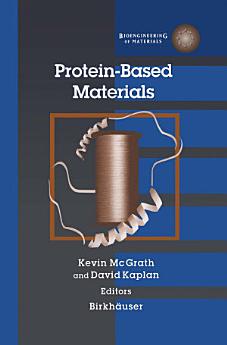Protein-Based Materials
David Kaplan · Kevin McGrath
2012年12月 · Springer Science & Business Media
電子書
430
頁數
report評分和評論未經驗證 瞭解詳情
關於這本電子書
Nature learned long ago how useful proteins are as a diverse set of building blocks to make materials with very diverse properties. Spider webs, egg whites, hair follicles, and skeletal muscles are all largely protein. This book provides a glimpse into both nature's strategies for the design and produc tion of protein-based materials, and how scientists have been able to go beyond the constraints of natural materials to produce synthetic analogs with potentially wider ranges of properties. The work presented is very much the beginning of the story. Only recently has there been much progress in obtaining a molecular understanding of some of nature's com plex materials, and the mimicry or replacement of these by synthetic or genetically engineered variants is a field still in its infancy. Yet this book will serve as a useful introduction for those wishing to get started in what is sure to be an active and productive field throughout the 21st century. The authors represent a wide range of interests and expertise, and the topics chosen are comprehensive. Charles R. Cantor Center for Advanced Biotechnology Boston University Series Preface The properties of materials depend on the nature of the macromolecules, small molecules and inorganic components and the interfaces and interac tions between them. Polymer chemistry and physics, and inorganic phase structure and density are major factors that influence the performance of materials.
為這本電子書評分
請分享你的寶貴意見。
閱讀資訊
智能手機和平板電腦
手提電腦和電腦
你可以使用電腦的網絡瀏覽器聆聽在 Google Play 上購買的有聲書。
電子書閱讀器及其他裝置
如要在 Kobo 等電子墨水裝置上閱覽書籍,你需要下載檔案並傳輸到你的裝置。請按照說明中心的詳細指示,將檔案傳輸到支援的電子書閱讀器。






